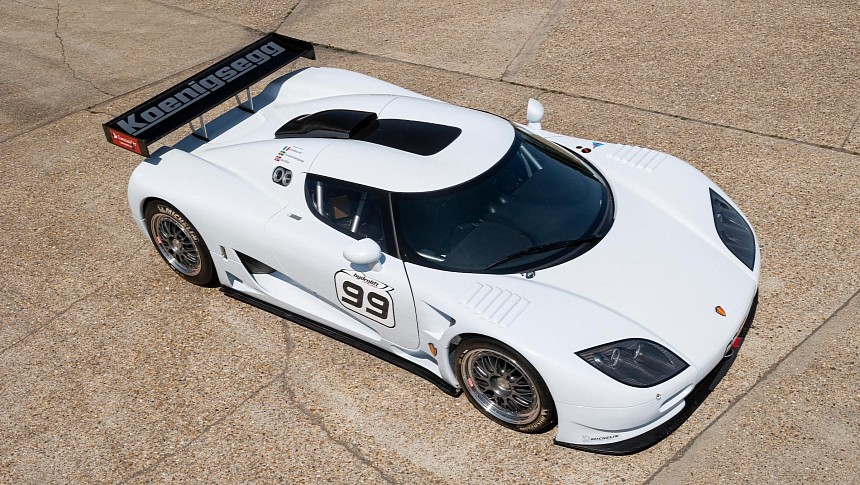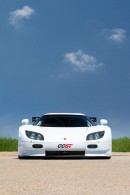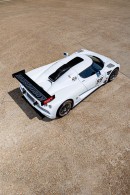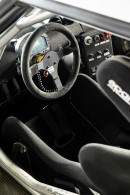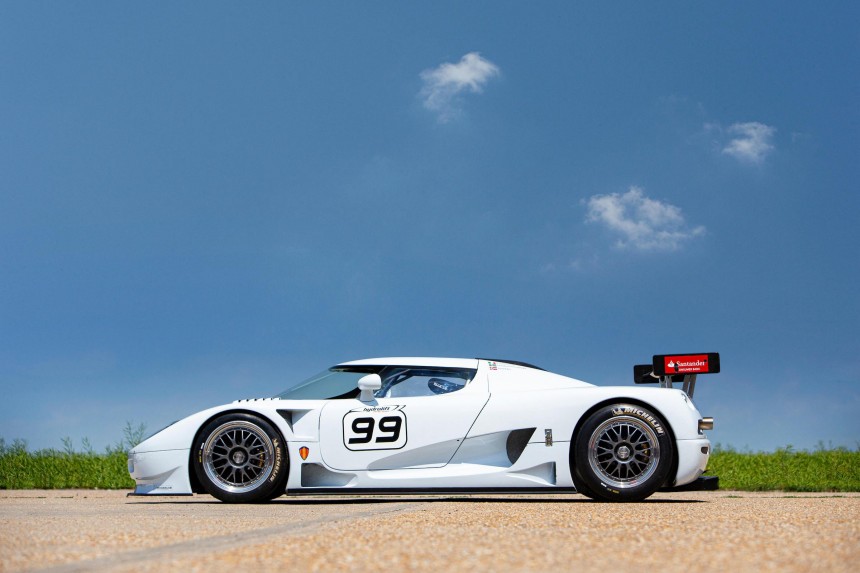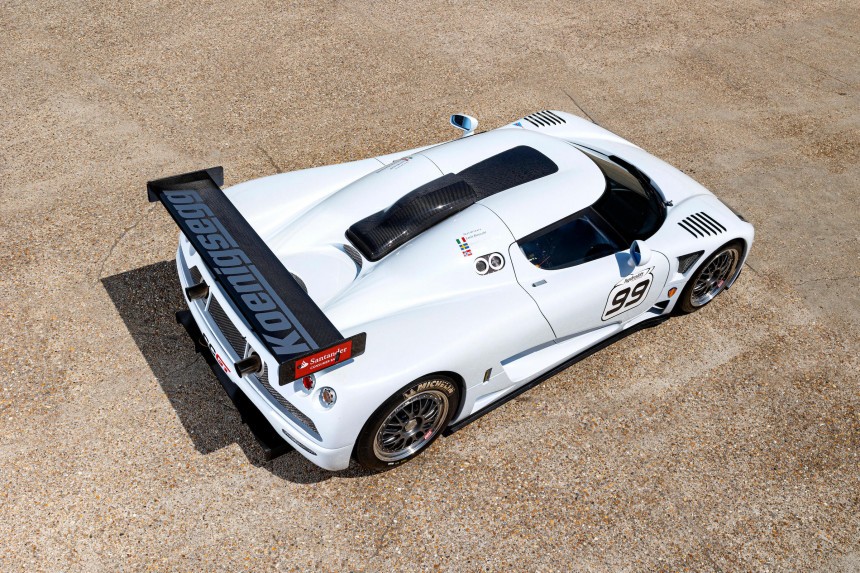Koenigsegg built a single race car. But the model never actually raced. It was a CCGT GT1 Competition Coupe, and what a story that name makes. The Swedish carmaker worked on it for years. But regulations changed. They just could not comply and had to give everything up.
The Swedish manufacturer started work on the CCGT program in 2003, under the supervision of Dag Bolenius, engineer and programmer, with supercar engineer Loris Bicocchi as a test driver.
They ran the first tests at the Knutstorp race track in 2008, and everything looked just right on paper. But – because there is always a "but" – two months into the shakedown drives, and FIA and ACO changed regulations for the GT1 class the car was supposed to compete in. They would not allow carbon monocoques anymore.
Furthermore, Koenigsegg started the project knowing that they had to build 20 production cars in the upcoming years. New regulations required 350 production cars per year. Under the new circumstances, it was impossible for the CCGT GT1 program to keep up. So it just ended then and there, before it even actually started.
That is why this car right here, chassis number YT9M1GOV8 007012, is the only racer that they have ever built. It is powered by a 5.0-liter 32-valve naturally aspirated V8 capable of 591 hp (600 PS), delivered via a sequential gearbox to the rear wheels.
The V8 is based on the unit that powered the Koenigsegg CCX, but had the superchargers removed, and the capacity increased in order to compensate for the loss of power.
Presented at the Geneva Motor Show in 2007, the model was supposed to enter the 24 Hours of Le Mans. It weighed only 1,000 kilograms (2,205 pounds) and generated over 600 kilograms (1,323 pounds) of downforce.
It was not supposed to be wider than 2 meters (6.56 feet), and the cockpit had to be at least 70% of the width of the car. The team built the car by hand between 20023 and 2007. But with the new regulations in force, it was a completely useless prototype.
The CCGT was purchased by the largest shareholder of Koenigsegg Automotive, former Offshore Class 1 World Champion and owner of Ever Design, Bard Ever.
It still runs on the original slick Michelin racing tires. And if the next owner wants it to make its debut in the Masters Endurance Legends Series, it is cleared for that competition since it is built in compliance with the GT1 regulations. And it surely runs and drives as it has always been a garage queen, kept in a temperature-controlled room in dry and dark conditions. The current owner, the only one so far since it left the factory, also carried out twice-yearly maintenance runs to make sure that V8 is still breathing.
The Koenigsegg CCGT1 now goes under the hammer with an auction guidance between 3 and 4 million pounds ($3,806,382 - $5,080,360). The future owner will be able to brag about owning the only race car that Koenigsegg has ever built. And Christian von Koenigsegg is not planning to change that any time soon.
The successor of the Agera, the 5.0-liter V8-powered Jesko can hit 300 mph (483 kph). Only the Hennessey Venom F5 and the Bugatti Chiron Super Sport 300+ can go faster than that at 301 mph (485 kph) and 304 mph (490 kph), respectively.
This was the plan in the first place. To hit speeds that others can only dream of. Christian von Koenigsegg founded the company in 1994, switching from import/export business to car making. He received $200,000 from the Swedish technical development board to start the business and also got financial support from his father, Jesko, in the first three years.
Christian would draw the setup of the cars, he would hand-model the cars with the help of a few friends, he would do everything necessary to get those cars running. Now the Research & Development division is doing all the work.
But there have always been ups and downs along this route, and a fire that engulfed the factory in February 2003 forced the company to move its headquarters into a former fighter jet facility that had previously belonged to the Swedish Air Force.
The new place had everything they needed and more, including a 50-meter (164-foot) wide and 1.7-kilometer (1.05-mile) long runway. Today it serves for car testing as well as for customers arriving to spec their cars in their private jets. There is also a helipad right outside the main entrance. You can imagine that those dropping by to order such a car would not go there by public transport. The Koenigsegg Jesko comes with an eye-watering price tag of $3.4 million.
They ran the first tests at the Knutstorp race track in 2008, and everything looked just right on paper. But – because there is always a "but" – two months into the shakedown drives, and FIA and ACO changed regulations for the GT1 class the car was supposed to compete in. They would not allow carbon monocoques anymore.
Furthermore, Koenigsegg started the project knowing that they had to build 20 production cars in the upcoming years. New regulations required 350 production cars per year. Under the new circumstances, it was impossible for the CCGT GT1 program to keep up. So it just ended then and there, before it even actually started.
The V8 is based on the unit that powered the Koenigsegg CCX, but had the superchargers removed, and the capacity increased in order to compensate for the loss of power.
Presented at the Geneva Motor Show in 2007, the model was supposed to enter the 24 Hours of Le Mans. It weighed only 1,000 kilograms (2,205 pounds) and generated over 600 kilograms (1,323 pounds) of downforce.
It was not supposed to be wider than 2 meters (6.56 feet), and the cockpit had to be at least 70% of the width of the car. The team built the car by hand between 20023 and 2007. But with the new regulations in force, it was a completely useless prototype.
The CCGT was purchased by the largest shareholder of Koenigsegg Automotive, former Offshore Class 1 World Champion and owner of Ever Design, Bard Ever.
The Koenigsegg CCGT1 now goes under the hammer with an auction guidance between 3 and 4 million pounds ($3,806,382 - $5,080,360). The future owner will be able to brag about owning the only race car that Koenigsegg has ever built. And Christian von Koenigsegg is not planning to change that any time soon.
Koenigsegg now builds street-legal race cars
It is the manufacturer of one of the fastest production cars out there that we are dealing with, right? They revealed the limited-production mid-engine Koenigsegg Jesko at the 2019 Geneva Motor Show and sold out before the event ended.The successor of the Agera, the 5.0-liter V8-powered Jesko can hit 300 mph (483 kph). Only the Hennessey Venom F5 and the Bugatti Chiron Super Sport 300+ can go faster than that at 301 mph (485 kph) and 304 mph (490 kph), respectively.
This was the plan in the first place. To hit speeds that others can only dream of. Christian von Koenigsegg founded the company in 1994, switching from import/export business to car making. He received $200,000 from the Swedish technical development board to start the business and also got financial support from his father, Jesko, in the first three years.
Christian would draw the setup of the cars, he would hand-model the cars with the help of a few friends, he would do everything necessary to get those cars running. Now the Research & Development division is doing all the work.
But there have always been ups and downs along this route, and a fire that engulfed the factory in February 2003 forced the company to move its headquarters into a former fighter jet facility that had previously belonged to the Swedish Air Force.
The new place had everything they needed and more, including a 50-meter (164-foot) wide and 1.7-kilometer (1.05-mile) long runway. Today it serves for car testing as well as for customers arriving to spec their cars in their private jets. There is also a helipad right outside the main entrance. You can imagine that those dropping by to order such a car would not go there by public transport. The Koenigsegg Jesko comes with an eye-watering price tag of $3.4 million.
